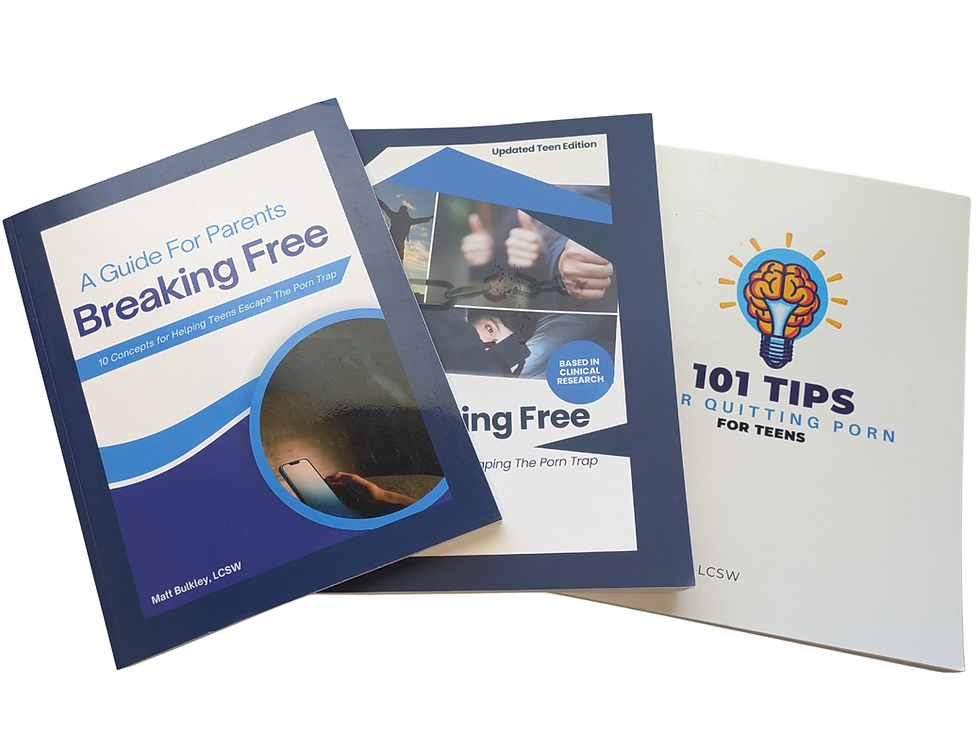Helping Your Teen Avoid Relapse: The Power of Beating Boredom with Engaging Activities
- Matt Bulkley

- Jun 21
- 3 min read
One of the most common—and often underestimated—triggers for teens struggling with pornography addiction is boredom. When your teen has nothing to do, their mind may naturally wander back to old, unhealthy habits. But the good news is that research and clinical experience both point to a simple, practical solution: help your teen create a list of fun, engaging activities to turn to when boredom strikes.
Why Boredom is a Risk Factor
Studies show that boredom isn’t just a minor inconvenience—it can be a significant emotional trigger for compulsive behaviors, including pornography use. When the brain lacks stimulation, it starts seeking out something—anything—to relieve that feeling of emptiness or restlessness. For a teen working to overcome pornography addiction, that can quickly become a relapse risk.
In fact, a 2018 study published in the Journal of Behavioral Addictions found that when individuals intentionally filled their time with enjoyable, engaging distractions, their risk of returning to compulsive habits significantly decreased. This approach is known in the clinical world as behavioral activation—a strategy that involves replacing unhealthy behaviors with positive, life-giving activities.
How a “Fun List” Can Help
Many therapists who work with teens and young adults recommend creating a personalized list of activities your child enjoys. This list becomes a go-to resource when they’re feeling bored, tempted, or emotionally low. Think of it as a tool for proactive coping—something they can turn to before the cravings begin.
What kinds of things might go on this list? It depends on your teen's personality and interests, but some great examples include:
Shooting hoops or skateboarding
Playing video games with friends
Drawing, painting, or other creative hobbies
Practicing music or learning a new song
Cooking or trying out new recipes
Going for a walk, run, or bike ride
Listening to a favorite playlist or podcast
Volunteering or helping out around the house
The key is to fill their time and mind with something they enjoy—something that gives them a sense of purpose, excitement, or joy. Over time, these kinds of positive reinforcements help to rewire the brain and reduce the pull of unhealthy patterns.
Support from the Research
While the 2018 study didn’t focus exclusively on pornography, its findings are widely applicable to any compulsive behavior—including screen-related addictions. It found that people who had a plan for how to handle idle time were much more successful at avoiding relapse. And for teens—who are already wired to seek stimulation and novelty—this strategy can be especially powerful.
As a parent, you can help guide this process. Sit down with your teen and brainstorm a list together. Encourage them to try new things, revisit hobbies they used to enjoy, or even set mini-goals like learning a new skill or exploring a new place in town. Having this list handy—whether it’s on their phone, in a journal, or on the fridge—can give them a sense of control and choice in moments when they’re feeling vulnerable.
Final Thoughts: Build the Good, Not Just Fight the Bad
Ultimately, the goal isn't just to avoid pornography—it's to build a life that feels too full, meaningful, and exciting to leave room for it. Helping your teen stay active and engaged isn’t a distraction from recovery—it is recovery. By filling their lives with positive activities, you’re helping them build resilience, discover new passions, and feel empowered in their healing journey.
If you’re looking for more tools or support, consider connecting with a counselor who specializes in teen behavioral health or addiction recovery. Recovery is absolutely possible—and it’s often strengthened by small, intentional steps like this.










Comments